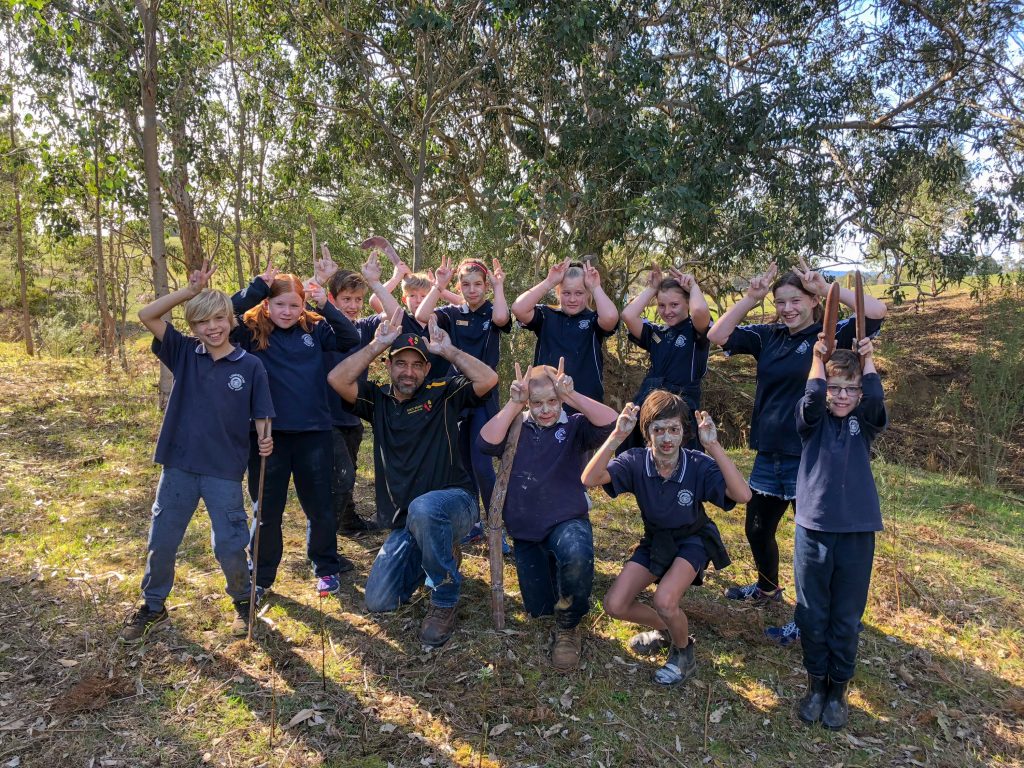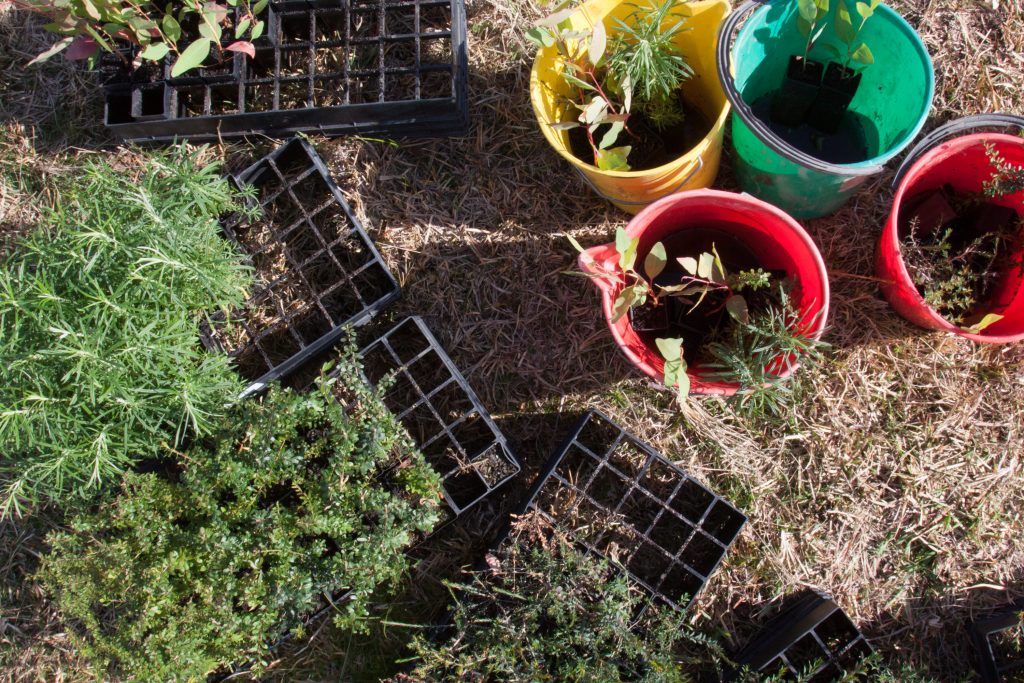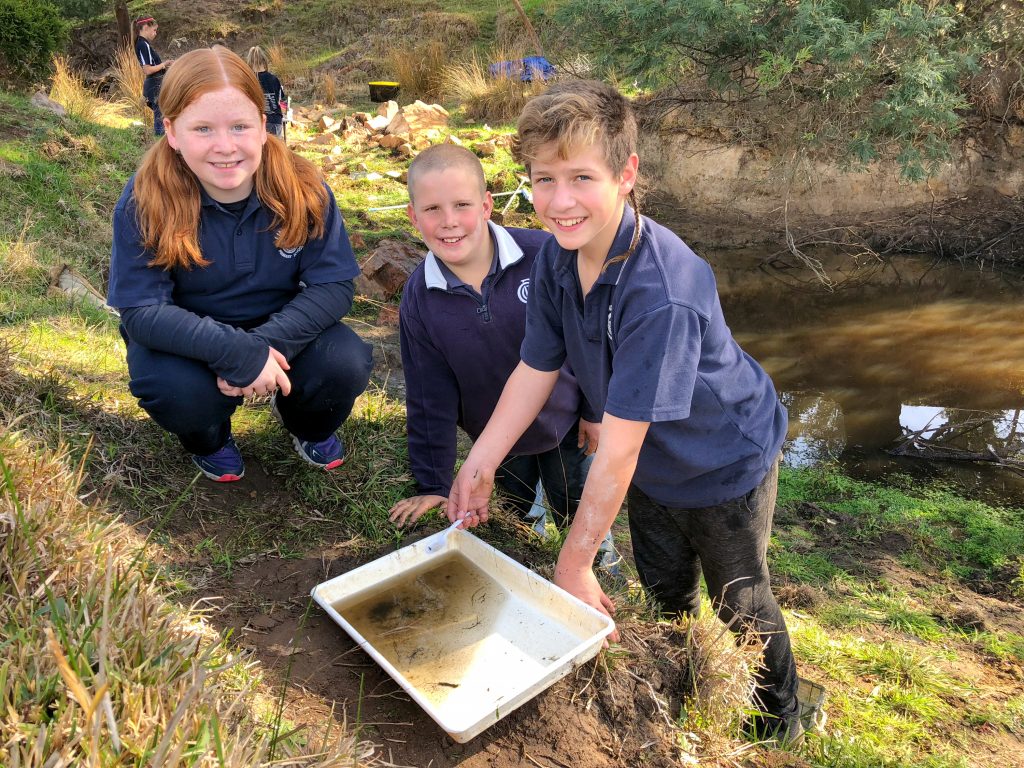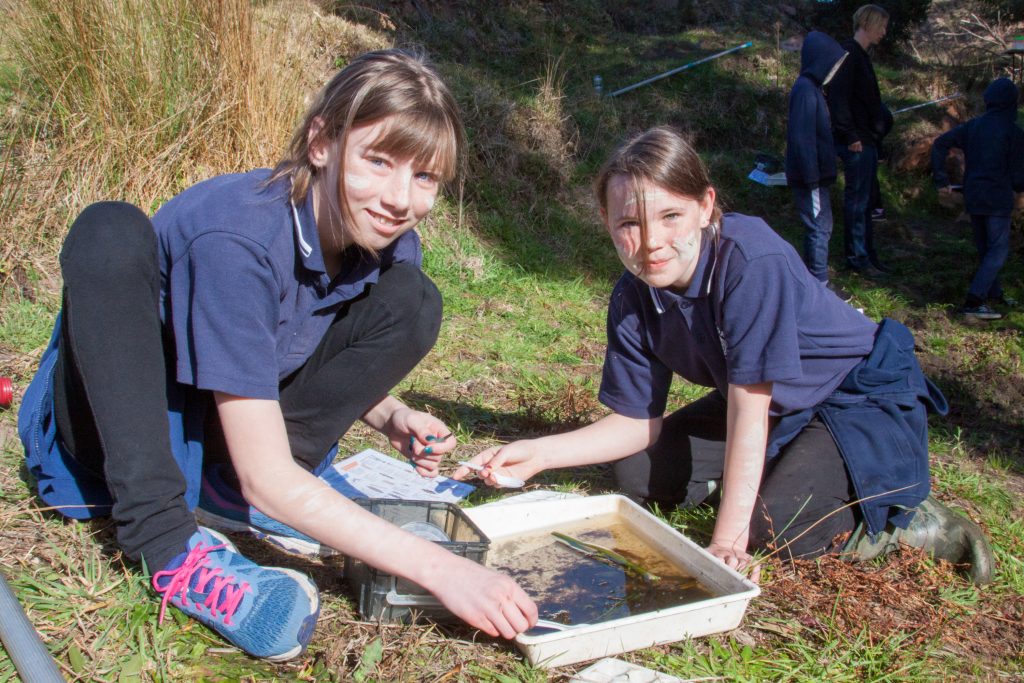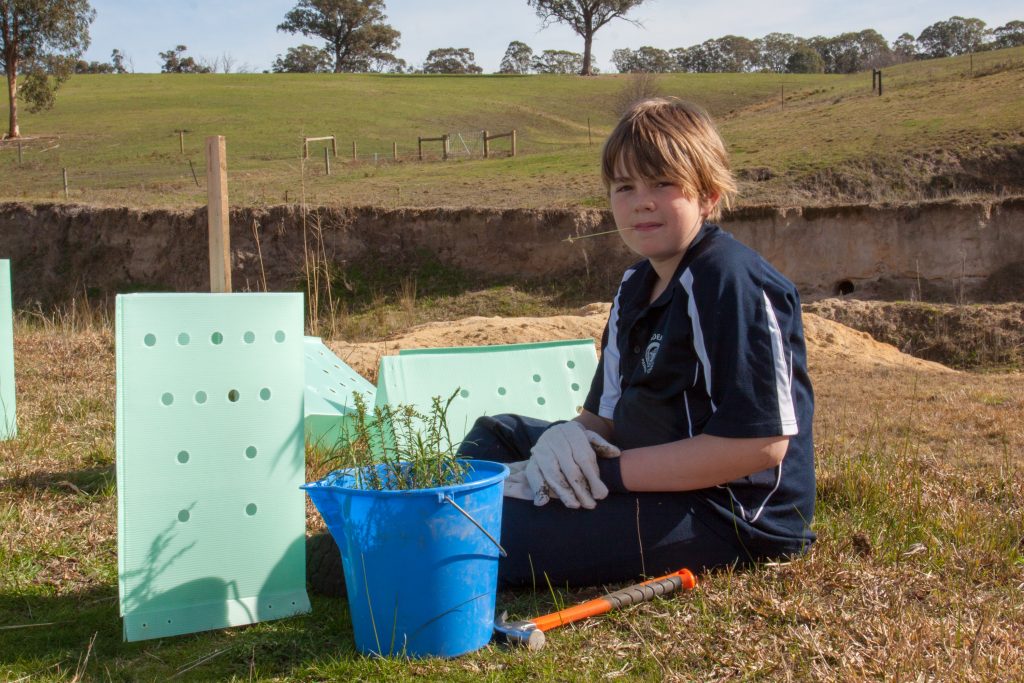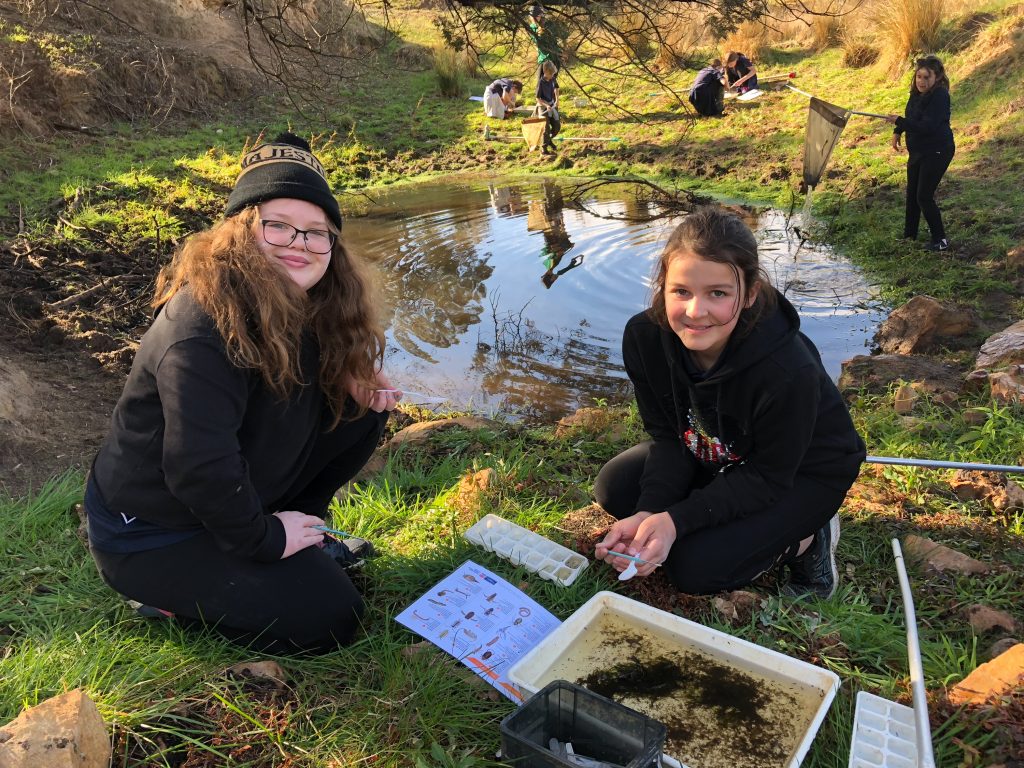
The East Gippsland Catchment Management Authority (the EGCMA), Marlo Angling Club and Bairnsdale RSL Fishing Club have confirmed that ‘Bushy’ Busch will be guest speaker at the upcoming Let’s Talk Bass Forums on the 17th and 18th of September.
Run over two nights in Marlo and Bairnsdale respectively, the forums will be packed full of information about techniques to catch an iconic Australian Bass and how to fine tune your when, where and how.
Joining Bushy will be Jarod Lyon from the Arthur Rylah Institute and John Douglas from the Victorian Fisheries Authority; on hand to talk fish stocks, Bass habitat and river health.
Let’s Talk Bass will kick off with a free bbq at 6.30pm at the Marlo Angling Club on Monday 17th, September. The action then heads to the Bairnsdale RSL Fishing Club on Tuesday 18th, September at 6.30pm with a light supper provided.
For more details please contact the Marlo Angling Club or Bairnsdale RSL Fishing Club.
East Gippsland is known for it’s beautiful rivers and waterways from Mallacoota to Bairnsdale. Funding through the Victorian Government’s Regional Riparian Action Plan (RRAP) has enabled the Authority to work in partnership with landholders, community groups and traditional owners to enhance recreational fishing, maintain sites of cultural significance and reduce impacts from stock grazing. Some examples are described below.
Landholders
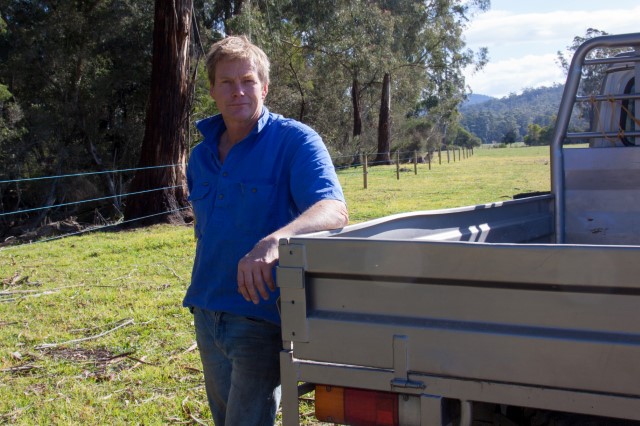 On Tonghi Creek (flowing into the Cann River), landholder Chris Nixon has recently completed works on his property. Upgrading fences and installing water troughs will keep stock off the creek and provide an alternative water supply. These measures will improve water quality and support the regeneration of native plants improving the health of Tonghi creek.
On Tonghi Creek (flowing into the Cann River), landholder Chris Nixon has recently completed works on his property. Upgrading fences and installing water troughs will keep stock off the creek and provide an alternative water supply. These measures will improve water quality and support the regeneration of native plants improving the health of Tonghi creek.
Partners
 GLaWAC’s natural resource management crew provide services including fencing, weed control, growing seedlings, revegetation and cultural awareness training in Gippsland. Recently the NRM crew have been working to improve public access points to the well known fishing spots at the mouth of the Tambo River. These works are part of a coordinated effort to improve the access points and health of the Tambo River where many people like to visit.
GLaWAC’s natural resource management crew provide services including fencing, weed control, growing seedlings, revegetation and cultural awareness training in Gippsland. Recently the NRM crew have been working to improve public access points to the well known fishing spots at the mouth of the Tambo River. These works are part of a coordinated effort to improve the access points and health of the Tambo River where many people like to visit.
Community
 The Twin Rivers Community Group are currently improving public access points at five popular fishing sites on the Tambo River around Swan Reach. Funded through the RRAP Angling Grants, the project will make significant contributions to restoring and maintaining the health of the Tambo River, improving recreational fishing access and re-establishing vegetation along the river.
The Twin Rivers Community Group are currently improving public access points at five popular fishing sites on the Tambo River around Swan Reach. Funded through the RRAP Angling Grants, the project will make significant contributions to restoring and maintaining the health of the Tambo River, improving recreational fishing access and re-establishing vegetation along the river.

With gloves at the ready, students from Lindenow Primary School celebrated National Tree Day last week with a visit to the upper reaches of Skull Creek.
The grade 5’s & 6’s planted over 300 native seedlings, including the endangered Woolly Waterlily, in an an effort to help restore the 10 km stretch of wetlands near Lindenow.
With the new plants in the ground, the kids even found time to investigate the tiny critters that live in the waterholes with the team from Bug Blitz and got their dance on with a little help from Uncle Alfie Hudson.
The event was organised by Greening Australia (GA) in collaboration with the East Gippsland Catchment Management Authority with funding provided by the Victorian State Governments ‘Our Catchment, Our Communities’ plan.
Martin Potts, from GA appreciates the significance of being able to foster relationships with the environment from an early age. “These students are directly involved in improving the biodiversity around their own community, what better way to begin to understand the importance of protecting these wetland habitats as a whole.” he said.
Grade six teacher Adam Cairns appreciates the connection that these excursions bring to the biological studies being taught in the classroom. “It’s important that the kids learn that they can have an impact in the community, through planting trees and keeping the environment thriving, as they’ll be responsible for looking after it soon enough. “
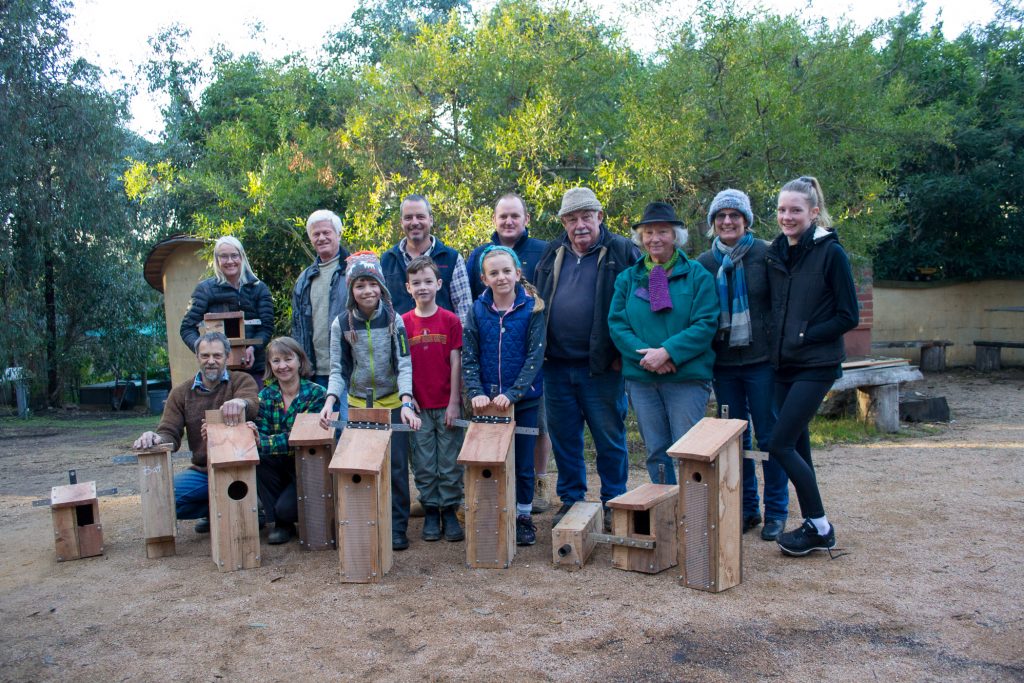
Landcare Groups across East Gippsland will share in $146,000 of funding for community projects as part of the latest round of Victorian Landcare Grants.
The funding, distributed through the East Gippsland Catchment Management Authority (EGCMA), supports on-ground works and community projects including weed control, pest animal control, protection of habitat, revegetation, and community education.
Graeme Dear, CEO of EGCMA said “the grants will help contribute further to the significant efforts made by our Landcare members in East Gippsland.”
This year the program has funded 12 projects and 11 support grants.
Groups that will receive project funding include:
- Bruthen & District Landcare Group
- Eastwood Landcare Group
- Friends of the Upper Nicholson Catchment Inc.
- Snowy West Landcare Group
- Tambo Bluff Landcare Coastcare
- East Gippsland Landcare Network
- Far East Victoria Landcare
- Snowy River Interstate Landcare Committee
The Victorian Landcare Grants are helping to implement the Government’s long-term biodiversity plan – Protecting Victoria’s Environment – Biodiversity 2037.
Another great example of our communities getting stuff done!
“The river is back to where it was when I was a child. I can’t remember it looking as healthy as it is at the moment since I was a young bloke.”
So says Daryl Cameron, a cattle farmer from Noorinbee who grew up on the farm that he and his brother Greg now run.
Back when Daryl was a kid he remembers the river being filled with fallen branches, lots of trees on the banks and plenty of little islands in the middle of the river. “You could get across in your boots without getting your feet wet” he says. Suffice to say that Daryl’s seen a lot of changes on the floodplain over the years.
The Cann River valley is well known for its floods. The area has always been prone to flooding but these days locals tend to refer to just three – ’71, ’78 and ’98, with 1971 being the biggest in living memory.
The ‘71 flood stunned the local farmers, with barely a fence left standing in the valley once the waters had subsided. “The 1971 flood tore the guts out of it” explained Daryl. “I woke up to discover our paddocks were four foot under water and I thought, gee I’ve blown my farming apprenticeship here! I remember there was a pressure wave 15-20 foot high throwing out huge trees over the wave, the force was just unbelievable.”
“Historically, authorities thought they were doing the right thing by deepening and widening the river, straightening it up.” concurs Greg, “but the consequences they weren’t able to predict when that ‘71 flood came was that it just moved so much of the alluvial plain into the river. That’s been the big battle since then.”
The Camerons have been working in partnership with the East Gippsland Catchment Management Authority and its predecessor, the Cann River Improvement Trust, to minimise the impacts of future flood events and improve the health of the river. An important key has been fencing to keep stock off the river and giving native vegetation the chance to regenerate along the river’s banks.
“Getting the river choked up again and trying to slow it down is pretty important to stabilise the riverbed. It’s a simple principle but hard to do and we wouldn’t have had a hope in hell on our own” says Greg.
Revegetating the banks has encouraged reed beds to form and over time longer and deeper pools of water have begun to re-establish. “It’s more systemic of what it would have been like before all of the land clearing so I’d say that it’s very positive. You certainly see the little Galaxia fish in the deeper pools, they were always there when we were kids but they all disappeared after ‘71 of course.”
The whole community is celebrating the return of a platypus on a neighbor’s property upstream explains Daryl, “I haven’t heard of a platypus in the valley for pretty much my whole adult life. It’s very encouraging to know they’re recolonising.”
Both brothers agree on the importance of a healthy river. “It’s the life blood of the valley” says Daryl. “There’ll always be things to manage but it’s the reason we’re all here; we farm and live on a floodplain and so it’s important to have that river as pristine as it can be.”
The Cann River is one of ten flagship waterway projects currently underway across the state as part of a commitment by the Victorian Government under the Water Plan for Victoria.
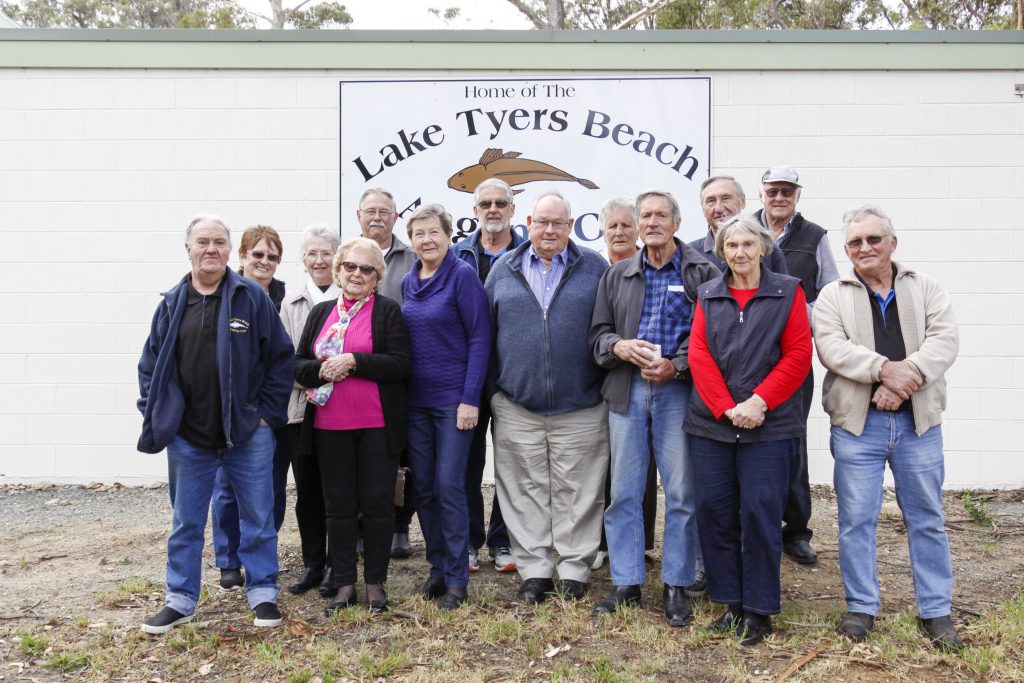
The East Gippsland Catchment Management Authority has been working with a number of its partners to control weeds along the Timbarra River.
Sections of the Timbarra, north west of Buchan, were recently burnt during a bushfire and large areas along the rivers edge are now seeing weeds such as willows and blackberries emerging.
Forest Fire Management Victoria and the Gunaikurnai Land and Waters Aboriginal Corporation (GLaWAC) NRM crew are working to remove weeds, particularly within the popular camping sites in the vicinity.
Further downstream, GLaWAC have also partnered with the Lake Tyers Beach Angling Club in controlling weeds to improve access to popular fishing spots.
These works aim to reduce the extent of weeds along the river, encouraging the regeneration of native vegetation, and to improve access for the local community and visitors alike to enjoy.
“We enjoy a close working relationship with all of our partners.” said the EGCMA CEO, Graeme Dear. “Projects like these are about people working together to improve the health of our waterways for all of the community to enjoy.”
The works are part of the Labor Government’s $222 million investment in improving the health of waterways and catchments, outlined in the Water for Victoria plan.

Members of the Friends of Picnic Point Reserve (FOPPR) Landcare Group recently celebrated their achievements with a community gathering held at the Picnic Point Reserve.
The group started as a collection of locals concerned with the degradation of the local wetland and a shared vision to restore the natural surrounds. A plan was devised and the group started a concerted effort to restore the 10 acre site.
Picnic Point Reserve is particularly unique containing unusually diverse vegetation including rainforest, grassy woodlands, shrubland and wetland in a relatively small area.
What was initially a neglected public reserve lacking native plants, with slopes covered in ivy and blackberries and erosion problems, has been gradually transformed.
“We started as a group of friends concerned about the degradation of the area.” explained Mary Baldwin, President of the FOPPR. “We just wanted to get rid of the weeds and replant native species to make it a nice public amenity for everyone to use”.
With the assistance of a number of Victorian Landcare Grants over the years, the group has focussed on several key projects throughout the reserve. “The early days were spent removing exotic trees and weeds and developing the wetland area along Yeates Drive. This helps to filter the stormwater from West Bairnsdale that flows into the Mitchell River and out to the lakes.”
Upgraded paths ensure that the area is accessible and a boardwalk over the wetlands provides an alternate route for the public to enjoy. “The reserve is a popular spot for our community, used for picnics, parties and even weddings. The addition of some native flowering plant beds, picnic tables and a picnic shelter on the top of the hill have added to the appeal of the area.”
“The grants have opened up the possibilities of what can be achieved” explains Mary. “Landcare is more important than it’s ever been; it enables people to make a difference to the environment in their community. This is a beautiful patch of land at the doorstep to the Mitchell River and group members had a vision of restoring it to something like its original state. We are all delighted and very proud of how it is developing. However, we would like to emphasise that it will always be a work in progress; there is a need for ongoing weeding and maintenance, new plantings in some areas plus further possible development in the future. New members are always welcome!”
The Victorian Landcare Grants support the implementation of Protecting Victoriaʼs Environment – Biodiversity 2037, the state governmentʼs long-term plan to protect the environment.
“The Gippsland Lakes, and particularly the rivers that feed them, are an important place for the Gunaikurnai, they’re the lifeline for our people when they’re travelling through country.” -Grattan Mullett Snr, GLaWAC
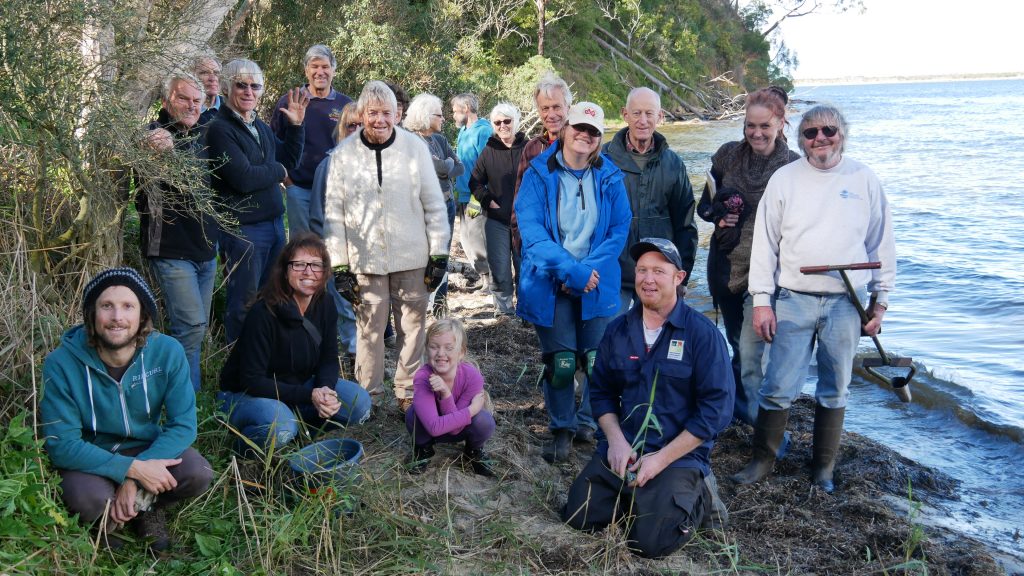
Chances are you probably haven’t heard of Hansons Bay, a hidden little gem of a bay just around the corner from Nungurner. It’s an area that the Nungurner Landcare Group know well, particularly the steep sloping section of rainforest leading down to the waters edge.
With the assistance of a Victorian Landcare Grant the group are currently working to regenerate the site. The project has already seen a huge amount of exotic weeds removed and over 600 rainforest species replanted. Unfortunately, pest animals, primarily deer, are also fond of the site and so the group have had to install tree guards to protect the seedlings from being eaten.
“East Gippsland is the only place in Victoria where rainforest to the waters edge is known to occur. This as a long term project to bring the rainforest canopy back” said Louise Avery, Nungurner Landcare Group Secretary. “The weather conditions this year are making things a little tricky for us but we’ve been well supported by the Victorian Landcare Grants and also the East Gippsland Rainforest Conservation Management Network (EGRCMN). We’re lucky that they have lots of volunteers who are willing to work right across the region on rainforest restoration.”
While Nungurner Landcare Group’s primary focus is the restoration of degraded areas around their local patch, the group readily welcome the opportunity to work with other Landcare groups and agencies. “We’re a small but merry band of volunteers” explains Ms Avery.
The group have lent a hand to help the Lakes Entrance Community Landcare Group on their project at Kalimna Gully, assisted Greening Australia and Parks Victoria with a rejuvenation program on Pelican Island and worked with the East Gippsland Shire to improve the amenity of the Nungurner jetty.
Ivan Knight, President of Nungurner Landcare Group appreciates the importance of working together. “We all recognise the value of our natural habitat” he explained. “It just makes it more fun, and you really get a sense of the more people who are involved, the quicker the work gets done so it’s less of a chore.”
“Having like minded people around you to get things done helps you to keep getting things done. We all learn from each other too so it really has paid off for us to work collaboratively and we certainly want to keep doing that as we go forward.”
Nungurner Landcare Group’s Hansons Bay project is funded through the Victorian Landcare Grants supporting the implementation of Protecting Victoriaʼs Environment – Biodiversity 2037, the state governmentʼs long-term plan to protect the environment.
The Victorian Landcare Grants have recently opened for 2018-19 with grants of up to $20,000 available. If you are a member of a Landcare group or an environmental community group with a great idea for a project on your patch then you should consider applying. Applications close on Tuesday 12th June, for more information please visit the East Gippsland Catchment Management Authority website.

